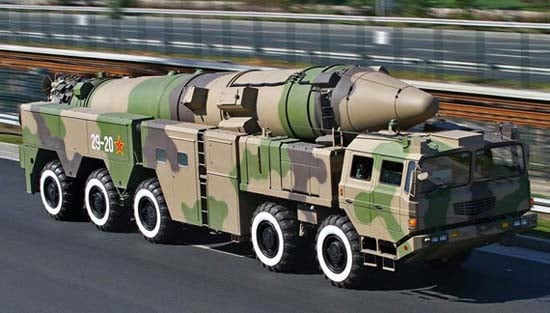SOURCE: AFI


A common misconception suggests China’s DF-21D missiles pose an immediate threat to Indian aircraft carriers in the Indian Ocean Region (IOR). This article dismantles this myth by examining the challenges China would face in such a scenario.
Targeting a moving aircraft carrier requires real-time data. While China has satellites, their data transmission isn’t instantaneous. Even with the fastest processing times, there’s a gap between data acquisition and relaying it to launch platforms. Additionally, satellite data itself has inherent errors in tracking targets and their own positions.
Another factor often cited is the use of drones or aircraft for real-time tracking. These platforms have limitations like speed, coverage area, and communication issues due to reliance on specific frequencies (HF/VHF/UHF) or satellite links. This data can also be inaccurate.
Over-the-Horizon Targeting radars (OTH-B) are often portrayed as a solution. However, their physics limit them. They operate at low frequencies (3-30 MHz) with poor resolution and require constant updates to climatological models. Their primary purpose is ballistic missile and aircraft detection, not targeting warships at long ranges.
The DF-21D itself presents limitations. Its operational window is narrow. Targeting updates must occur during the initial 70-second boost phase before the missile’s trajectory becomes unalterable. The mid-course phase offers no maneuvering capabilities.
Even if it re-enters the atmosphere, the DF-21D’s terminal velocity (Mach 2) is no match for modern missile defense systems like MR-SRAM and the New Ship-Based BMD System, designed to intercept missiles traveling at much higher speeds (Mach 3-5).
An aircraft carrier, with its mobility, adds another layer of complexity. By the time the missile reaches its terminal phase, the carrier could be hundreds of meters away from its initial position, significantly reducing the chances of a successful hit.
There’s limited evidence of the DF-21D’s effectiveness. Reported test launches in 2020 were allegedly unsuccessful, with one missile landing ashore. Targeting a static model on a railway track in a desert is a far cry from hitting a moving target on open seas.
While the DF-21D carries a potential threat, it’s not an invincible “carrier killer.” The challenges of real-time data acquisition, unreliable air assets, limitations of OTH radars, the missile’s own limitations, and modern missile defense systems make sinking a moving aircraft carrier a highly improbable feat.